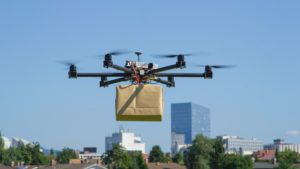Here we continue our guide to drones, with part two exploring specialised drone categories as well as underwater and ground drones.
GPS
GPS drones are typically multi-rotors however they work by linking to satellites via a GPS hookup. This means they are able to map out the rest of their flight using the hookup and creates data the operator can then use. GPS drones are generally a modified multi-rotor and their enhancements consequently use large amounts of battery power. This is not a problem though as GPS drones have three unique features including autonomous flight, position hold and return to base (which can happen when the drone is either running low on battery or has reached the edge of its optimum operational range). As a result, these drones are great for mapping areas, surveying and inspections.
View this post on Instagram#mavicair #mavicair2 #mavic #dji #djimavicair2 #drone #gpsdrone
A post shared by Mayik Studio (@mayikstudio) on
Photography
Photography drones are another kind of specialised drone design. They are also multi-rotor drones, with either a fixed or detachable professional-grade camera. These drones are generally designed with greater stability to allow them to hover over particular areas to capture high quality images or footage. Although they can be useful for capturing great images, photography drones generally tend to have limited flight time as they have to carry the extra weight of the camera and fight wind to stay level and hover to take the photos.
View this post on InstagramNext level selfie 🤳🚁 What drone do you have? @damien_murphy @dronenerds
A post shared by 𝑫𝒓𝒐𝒏𝒆𝒔 & 𝑭𝒂𝒔𝒉𝒊𝒐𝒏| 🛸👔👟👗👠🚀 (@dronesandfashion) on
Micro
Nano or micro drones are often used by militaries given their discrete design – some being as small as 1” x 4” that can fit in a special belt. A popular example of a micro drone is the ‘Black Hornet’ which is used by the British military. On a single battery charge this drone can fly for 25 minutes and are fitted with micro or infrared cameras.
Submersible/ Underwater
Underwater drones are still considered a newer category of drones, however, their uses and technology are continuing to develop rapidly. Where aerial drones go by UAV (unmanned aerial vehicles) underwater drones tend to go by ROV (remotely operated vehicles). Although they are mainly used by professionals for capturing underwater footage, these drones can also be used for exploration, inspecting ships, research or filmmaking. The most common practice for underwater drones is to have them tethered to a floating beacon or buoy using a cable to maintain a live feed and stop the drone from getting lost. Depending on the purpose and context of using the ROV though, wireless drones do exist and can be used. Water drones tend to have powerful headlamps to ensure better visibility and most have 4K cameras.
View this post on InstagramA post shared by YouCanRobot (@youcanrobot) on
Ground
Ground drones or UGVs (unmanned ground vehicles) operate on land and are often used when situations are inconvenient, dangerous or impossible to have a human operator carry out the task. These can be used by the military or for commercial/civilian tasks (such as underground mining or crop harvesting). UGVs can be controlled remotely with handhelds or fixed stations or can operate autonomously. These vehicles can come in a range of sizes with smaller options being more popular with defence forces and larger options being used for commercial applications.
View this post on InstagramA post shared by Unmanned RC (@unmannedrc) on
References:
https://www.aircraftcompare.com/blog/types-of-drones/
https://www.nap.edu/read/11379/chapter/8
https://www.unmannedsystemstechnology.com/category/supplier-directory/platforms/ugvs/



